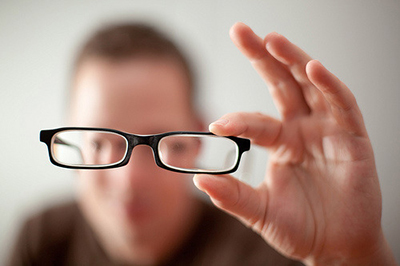
Source: cohensfashionoptical.wordpress.com
Myopia, or short-sightedness, is a condition in which a person cannot see clearly objects that are far away. Images are out of focus because the eyeballs are longer than usual. Corrective eyewear or contact lenses are required to correct the image formed.
It is estimated that around 1 billion people around the world are short-sighted, which causes an impact to global healthcare costs. A 2003 study conducted in Gombak, Selangor found that 35% of school-going children have myopia, of which 65% are ethnic Chinese, 30% Malay and 15% Indian.
Among the factors contributing to short-sightedness in children is performing an excessive number of tasks that require short-distance focus – for example reading, watching television, using tablets and electronic gadgets – which ultimately results in less time playing outdoors.
In a growing child, the lens plays a role in determining the final size of the eyeballs. Children who are constantly using electronic gadgets, instead of spending time outdoors, end up with lens that are in a globular shape for prolonged periods of time. This signals the eyeball to grow longer, resulting in short-sightedness when the child is older. When the refractive index needed to correct the myopia is too high (exceeding 6 diopter or -6.00DS), there is an increased risk of complications like retinal detatchment, macular degeneration, glaucoma and other serious conditions.
Children are more likely to have short-sightedness than long-sightedness (presbyopia), but a complete examination is required to accurately determine the type of sight impairment a child has. Parents, if you notice that your child is cross-eyed, complains of headaches, has difficulty reading at school, or has abnormal head posture when watching television (e.g. leaning to the left or right), do make an appointment with an ophthalmologist as soon as possible. This should preferably be done before the age of 6. When detected early, a child’s vision impairment can be corrected with spectacles. However, prevention is still better than cure.
The use of corrective eyewear is the recommended treatment for myopia in children. The use of contact lenses is not suitable because children are not able to comply with proper contact lens care. For example, children may forget to remove their contact lenses before bed, which can result in eye infections. LASIK surgery for treatment of short-sightedness can only be done after the age of 21, which is when the eyes stop growing.
Children with short-sightedness should have their eyesight checked annually. However, children at puberty may complain of poor vision or headaches despite using spectacles and should be brought for an earlier reassessment of their condition.
Dr. Azlindarita @ Aisyah Mohd Abdullah is an ophthalmologist and lecturer in the Medical Faculty in UiTM.
Rujukan
- Refractive Error and Visual Impairment in School-Age Children in Gombak District, Malaysia Pik-Pin Goh, Yahya Abqariyah, Gopal P. Pokharel, Leon B. Ellwein, Volume 112, Issue 4, Pages 678–685, April 2005
Myopia and the Urban Environment: Findings in a Sample of 12-Year-Old Australian School Children,Jenny M. Ip 1 , Kathryn A. Rose 2 , Ian G. Morgan 3 , George Burlutsky 1 and Paul Mitchell 1JAMA. 2003;290(15):2057-2060.
[This article belongs to The Malaysian Medical Gazette. Any republication (online or offline) without written permission from The Malaysian Medical Gazette is prohibited.]
